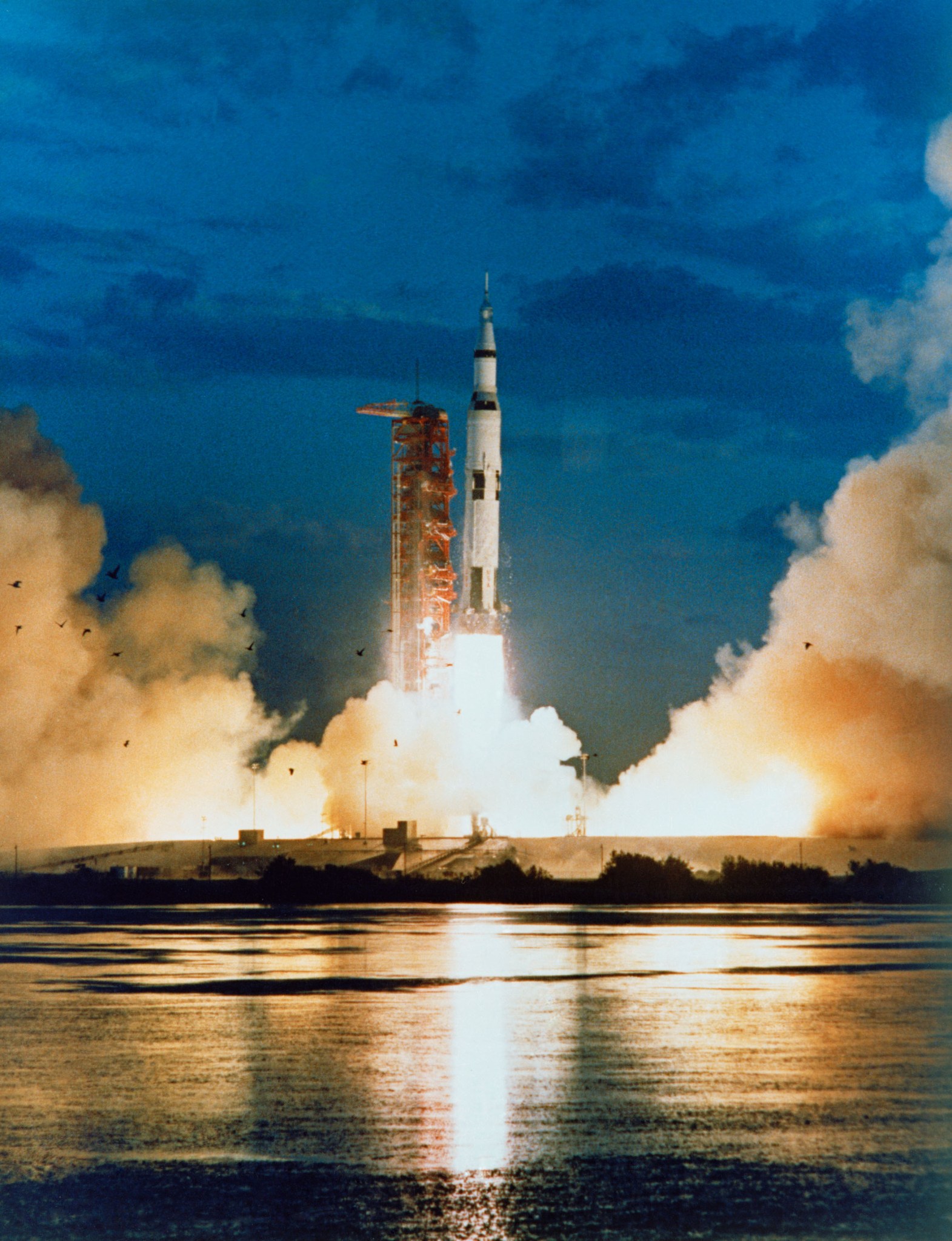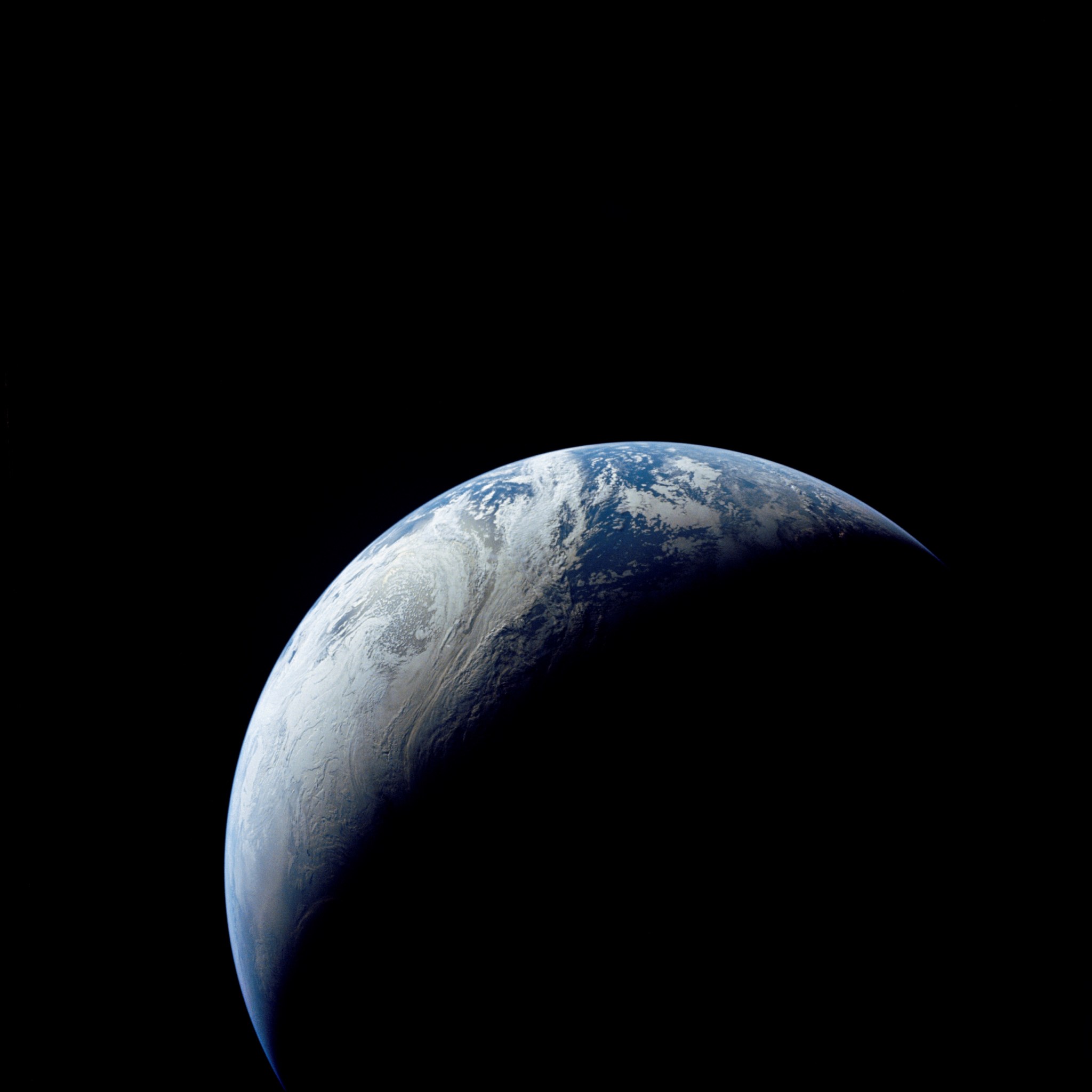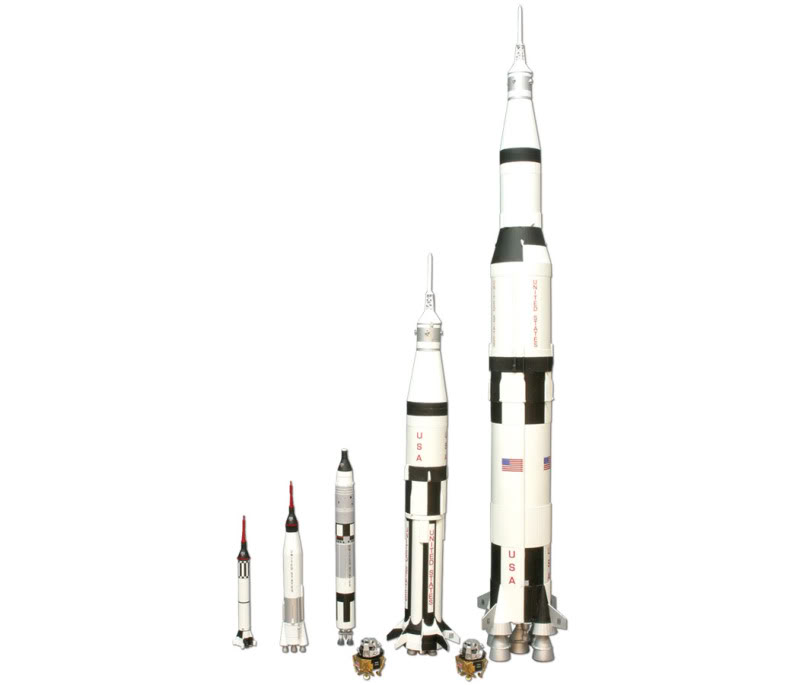In November 1967, with the Space Age barely 10 years old, NASA was about to take one giant leap forward: the first flight of the Saturn 5 Moon rocket. For the mission known as Apollo 4, the 363-foot tall Saturn 5 had rolled out to Pad 39A at the Kennedy Space Center (KSC) in Florida on August 26, 1967. There it underwent several months of testing including a Countdown Demonstration Test, concluded on October 13, leading to many lessons learned that resulted in an essentially trouble-free countdown for the actual launch. Apollo 4 was to be an all-up test flight, meaning all three stages of the rocket would be flown together for the first time, as well as the Apollo Command and Service Module (CSM). It would be the first Apollo flight since the fire in January 1967 that took the lives of astronauts Gus Grissom, Ed White and Roger Chaffee.
Controllers in the Launch Control Center Firing Room at KSC monitored the three-day countdown. At 7 AM on November 9, the five F-1 engines roared to life, generating 7.5 million pounds of thrust, and a few seconds later the Saturn 5 began to climb slowly skyward. Scientists calculated that the noise created by the launch was one of the loudest ever, natural or man-made, and the vibrations rattled the press site several miles away. As the rocket cleared the launch tower, control of the flight was transferred to Mission Control at the Manned Spacecraft Center in Houston, Texas, where the mission was monitored by Flight Director Glynn Lunney and his team of controllers.
All three stages of the Saturn 5 worked perfectly to place Apollo 4 into a circular Earth orbit. After a three-hour coast, the third stage reignited to place the CSM into a highly elliptical orbit. The Service Module engine was then fired, first to slightly raise the high point of the orbit to 11,234 miles and again on the way down to increase the speed of reentry to 24,917 miles per hour simulating a lunar return to test the all-important heat shield. Apollo 4 splashed down in the Pacific Ocean after a flight of 8 hours 37 minutes and was soon recovered aboard the aircraft carrier USS Bennington, having accomplished all its mission objectives.
President Lyndon B. Johnson said of the flight: “The whole world could see the awesome sight of the first launch of what is now the largest rocket ever flown. This launching symbolizes the power this nation is harnessing for the peaceful exploration of space.” Apollo Flight Director Gene Kranz remembered: “In Mission Control, all of us felt elated as America resumed its voyage to the Moon.”
The Apollo 4 Command Module is currently on display at the INFINITY Science Center at the NASA Stennis Space Center in Mississippi.
For more on the Apollo Program, please visit the JSC History Office page at https://www.jsc.nasa.gov/history/apollo.htm






























